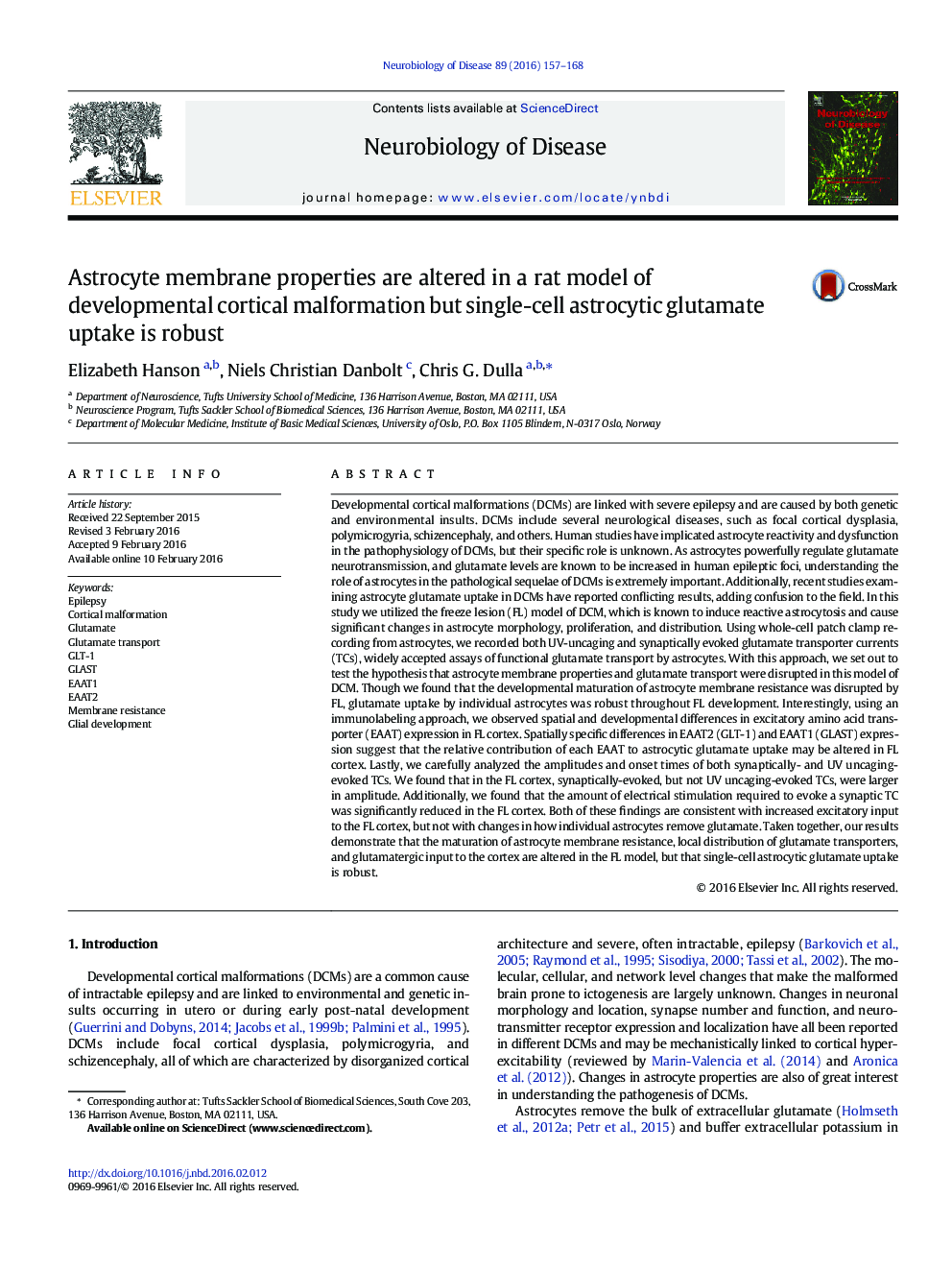| کد مقاله | کد نشریه | سال انتشار | مقاله انگلیسی | نسخه تمام متن |
|---|---|---|---|---|
| 6021420 | 1580634 | 2016 | 12 صفحه PDF | دانلود رایگان |
- Glutamate uptake by individual astrocytes is robust at all developmental stages in the freeze lesion model of developmental cortical malformation.
- Neonatal astrocyte membrane resistance is altered by freeze lesion.
- Regional and developmental distribution of glutamate transporters is altered by freeze lesion.
- Glutamatergic signaling is altered in adult freeze lesion cortex.
Developmental cortical malformations (DCMs) are linked with severe epilepsy and are caused by both genetic and environmental insults. DCMs include several neurological diseases, such as focal cortical dysplasia, polymicrogyria, schizencephaly, and others. Human studies have implicated astrocyte reactivity and dysfunction in the pathophysiology of DCMs, but their specific role is unknown. As astrocytes powerfully regulate glutamate neurotransmission, and glutamate levels are known to be increased in human epileptic foci, understanding the role of astrocytes in the pathological sequelae of DCMs is extremely important. Additionally, recent studies examining astrocyte glutamate uptake in DCMs have reported conflicting results, adding confusion to the field. In this study we utilized the freeze lesion (FL) model of DCM, which is known to induce reactive astrocytosis and cause significant changes in astrocyte morphology, proliferation, and distribution. Using whole-cell patch clamp recording from astrocytes, we recorded both UV-uncaging and synaptically evoked glutamate transporter currents (TCs), widely accepted assays of functional glutamate transport by astrocytes. With this approach, we set out to test the hypothesis that astrocyte membrane properties and glutamate transport were disrupted in this model of DCM. Though we found that the developmental maturation of astrocyte membrane resistance was disrupted by FL, glutamate uptake by individual astrocytes was robust throughout FL development. Interestingly, using an immunolabeling approach, we observed spatial and developmental differences in excitatory amino acid transporter (EAAT) expression in FL cortex. Spatially specific differences in EAAT2 (GLT-1) and EAAT1 (GLAST) expression suggest that the relative contribution of each EAAT to astrocytic glutamate uptake may be altered in FL cortex. Lastly, we carefully analyzed the amplitudes and onset times of both synaptically- and UV uncaging-evoked TCs. We found that in the FL cortex, synaptically-evoked, but not UV uncaging-evoked TCs, were larger in amplitude. Additionally, we found that the amount of electrical stimulation required to evoke a synaptic TC was significantly reduced in the FL cortex. Both of these findings are consistent with increased excitatory input to the FL cortex, but not with changes in how individual astrocytes remove glutamate. Taken together, our results demonstrate that the maturation of astrocyte membrane resistance, local distribution of glutamate transporters, and glutamatergic input to the cortex are altered in the FL model, but that single-cell astrocytic glutamate uptake is robust.
Journal: Neurobiology of Disease - Volume 89, May 2016, Pages 157-168
